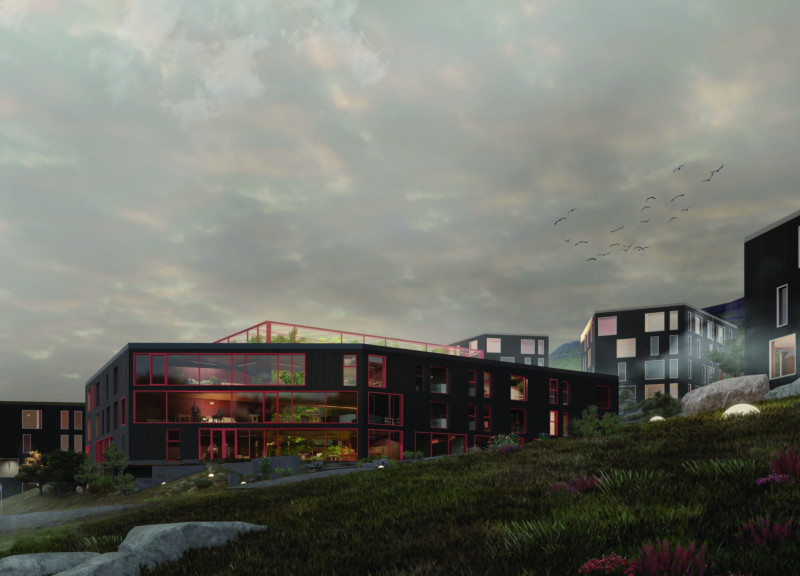5 key facts about this project
From the outset, the design illustrates a clear understanding of its function. The project serves as a multipurpose facility, accommodating a variety of activities that cater to a diverse user group. This adaptability is evident in the flexible spaces incorporated throughout the structure, allowing for a dynamic use over time. The layout fosters a sense of community and interaction, encouraging social engagement through well-defined public areas that seamlessly integrate with private spaces.
The unique architectural strategies utilized in this project are particularly noteworthy. The design employs a combination of natural materials and modern construction techniques, fostering a dialogue between tradition and innovation. Wood and stone elements are thoughtfully integrated into the façade, grounding the architecture in its setting while providing warmth and texture. This careful selection of materials is not only aesthetically pleasing but also serves to enhance the building's performance, as these choices contribute to energy efficiency and environmental sustainability.
Light plays a pivotal role in the overall design, with large windows and strategically placed openings that invite natural illumination into the interior. This approach not only reduces the reliance on artificial lighting but also creates a welcoming atmosphere that enhances the quality of the indoor experience. The careful consideration of natural light significantly impacts the usability of spaces, promoting well-being and productivity among occupants.
In examining the structure's form, it is clear that the design reflects an intention to respond to the surrounding landscape. Curvilinear elements and undulating roofs mimic natural topographies, creating a visual connection with the site's features. This not only enhances the building's integration into its environment but also contributes to its visual appeal, presenting a refreshing alternative to conventional rectilinear forms often found in urban contexts.
Moreover, the project emphasizes the importance of outdoor spaces in architectural design. Terraces and landscaped areas are interwoven into the overall layout, providing opportunities for relaxation and recreation. These outdoor extensions serve as vital social spaces, facilitating interaction and community engagement. The thoughtful arrangement of these elements speaks to a broader trend in architecture that prioritizes connectivity with nature, offering users an escape from the hustle and bustle of urban life.
The careful attention to detail throughout the design is also commendable. Elements such as custom-designed lighting fixtures and furniture contribute to a cohesive aesthetic, reflecting the project's overarching vision of a harmonious and functional space. Each design decision is made with a clear intention, resulting in an environment that not only meets practical needs but also enriches the user experience.
This project stands as a testament to the evolving nature of architecture, where design continually adapts to meet the needs of people and the planet. It encapsulates a philosophy that honors tradition while pushing the boundaries of contemporary practice. Future readers and architectural enthusiasts are encouraged to delve deeper into this impressive project presentation, where they can explore architectural plans, sections, designs, and underlying ideas that further illuminate the architect's vision and the project's significance within the architectural landscape.


























